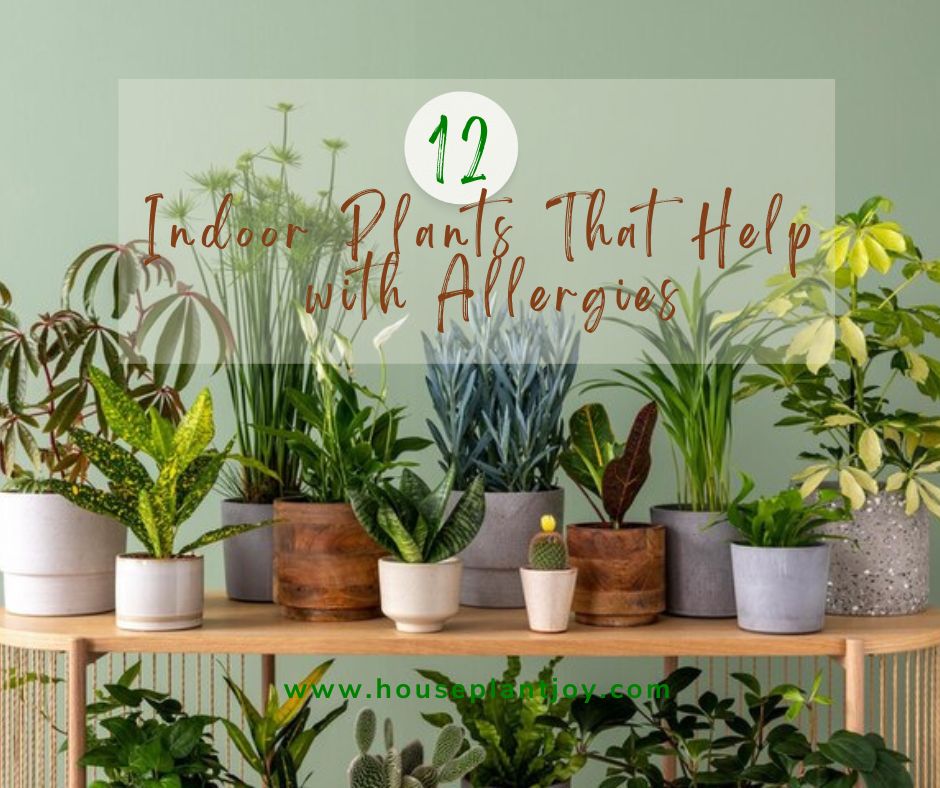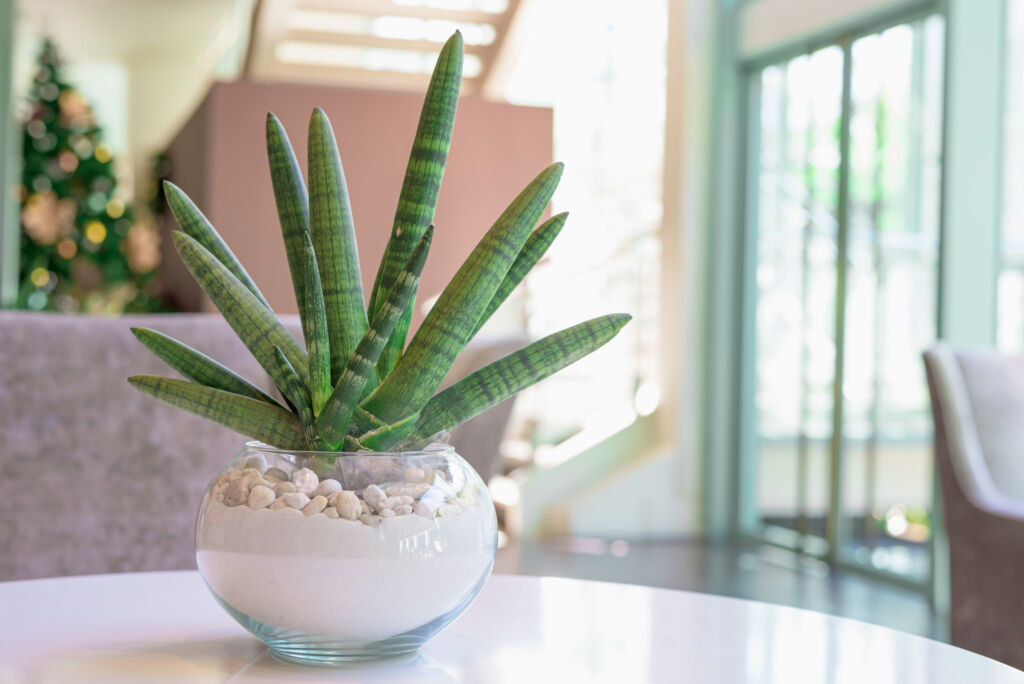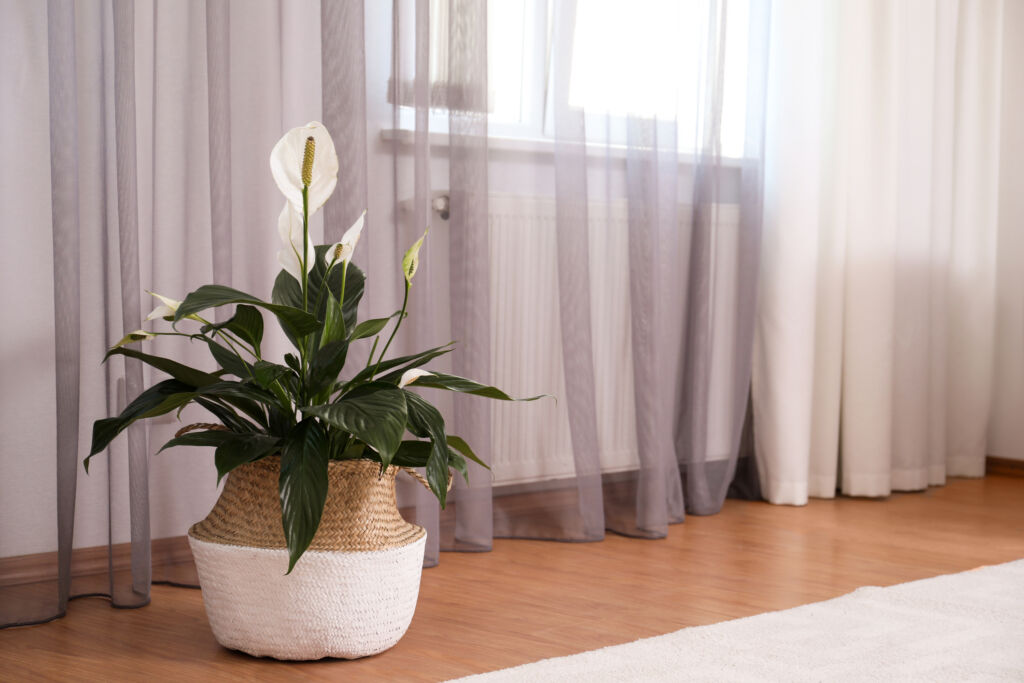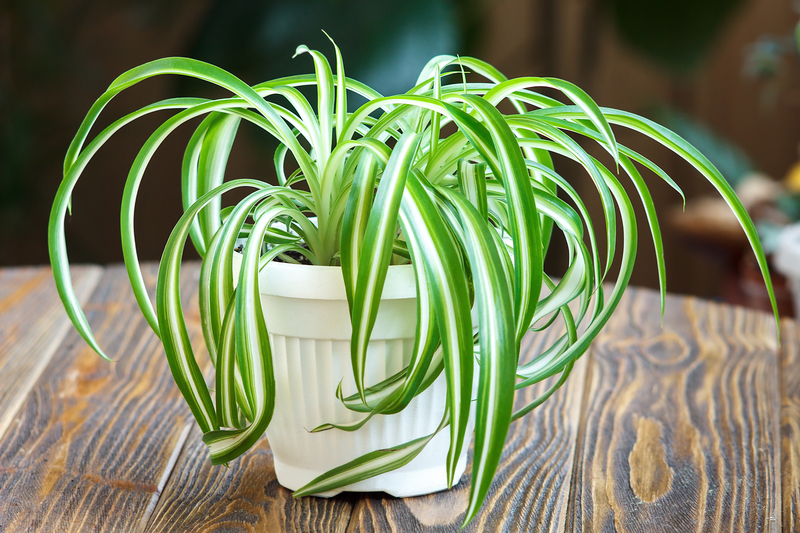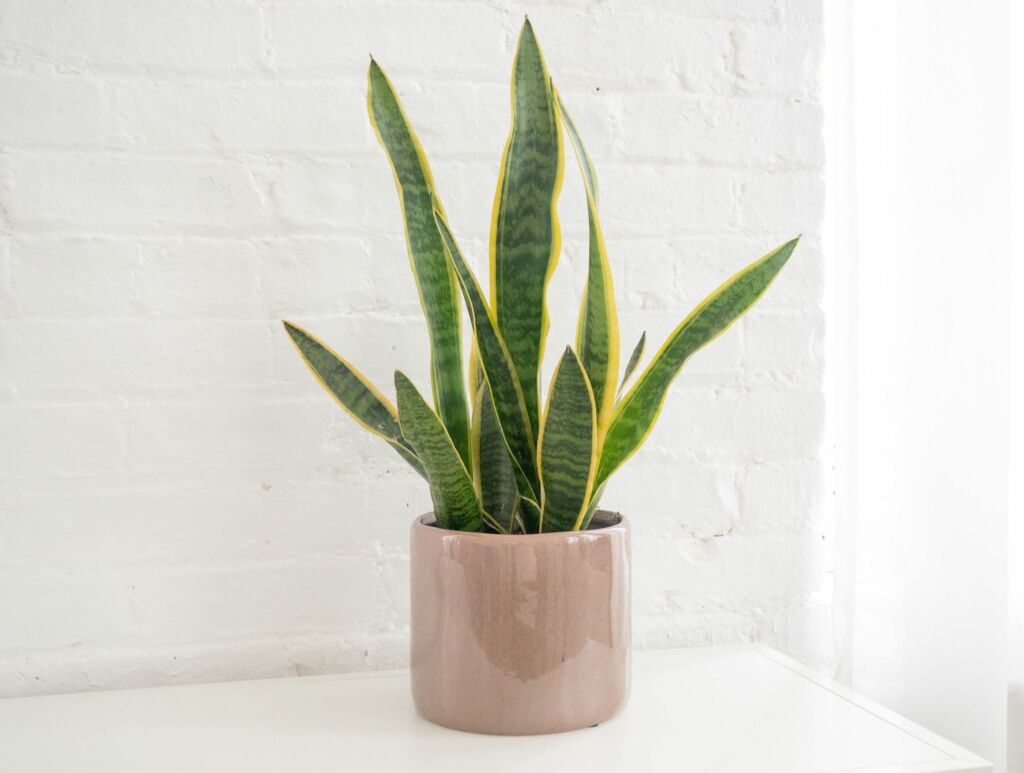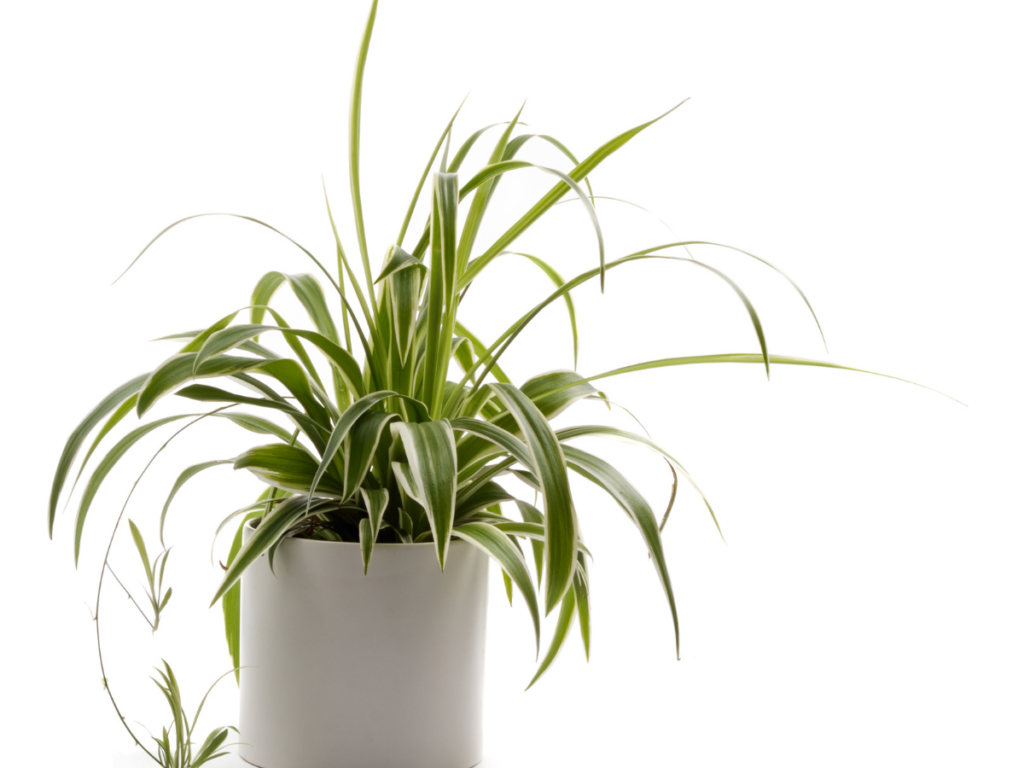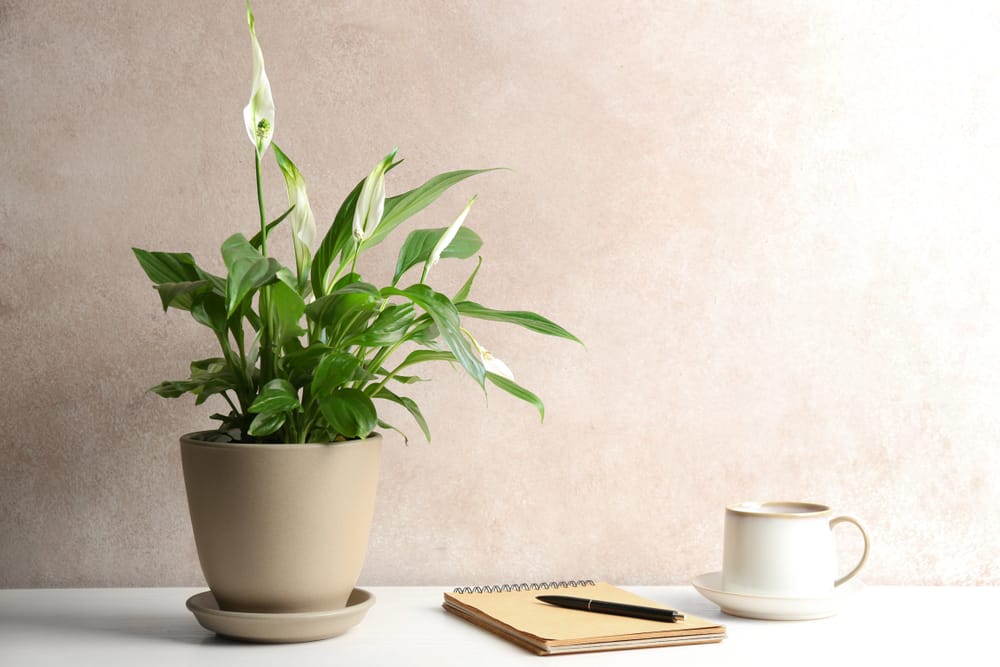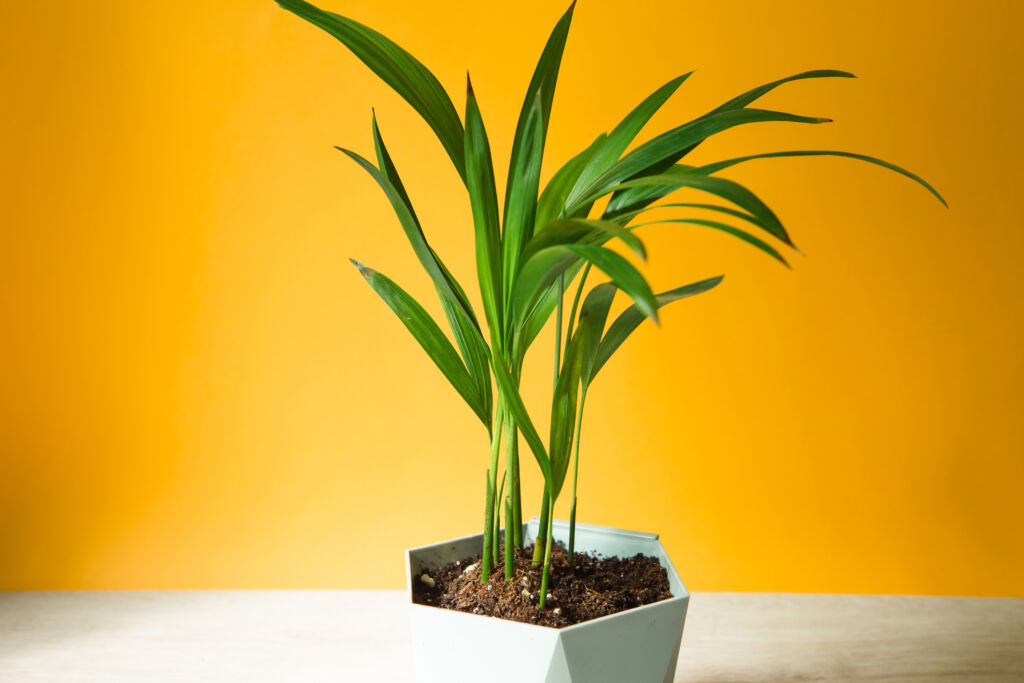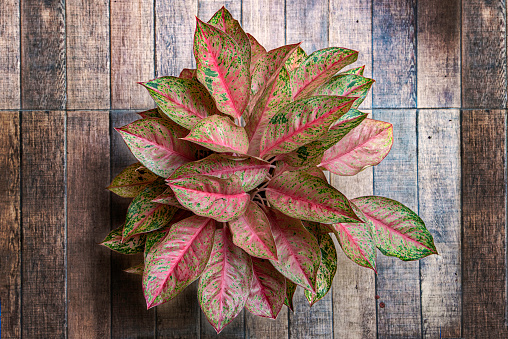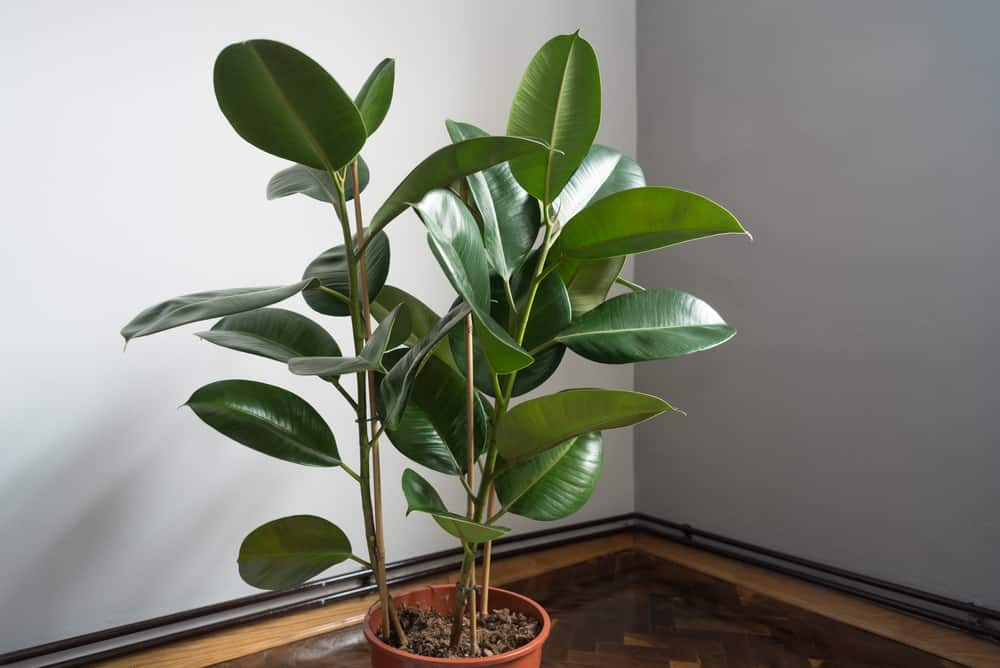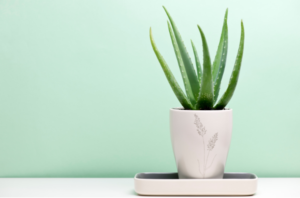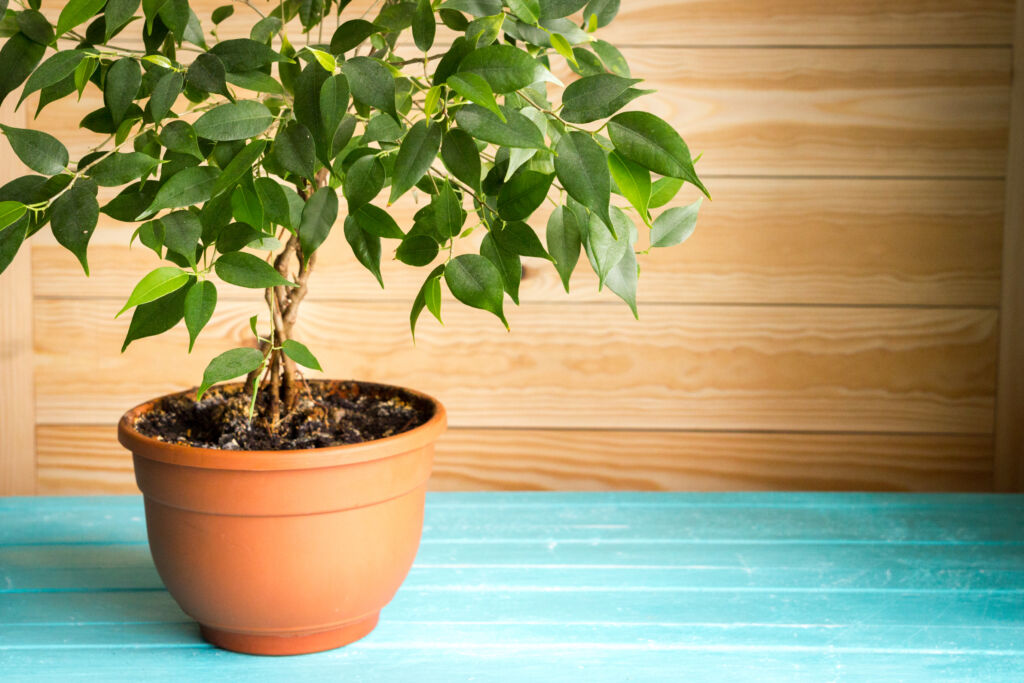HousePlantJoy is supported by our audience. When you purchase through one of our links, we may earn a small affiliate commission. As an Amazon Associate I earn from qualifying purchases. Your cost is not affected.
==================
Do you suffer from allergies or want to improve your home’s air quality? Say goodbye to constantly sneezing and reaching for tissues! We have a solution for you. These are the indoor plants that help with allergies. That’s right! Houseplants can help purify the air, reduce allergens, and boost mood. In this blog post, we’ll explore the benefits of allergy-friendly indoor plants, share a list of the top 12 plants to improve your home’s air quality, and provide essential tips to keep your indoor garden thriving.
Key Takeaways
- Allergy-friendly indoor plants can purify air, act as natural humidifiers, and reduce stress levels.
- The top 12 allergy-friendly indoor plants include Snake, Spider, Peace Lily, Bamboo Palm, and more.
- Regular cleaning, proper watering & pest control help maintain a healthy environment in your home.
The Benefits of Allergy-Friendly Indoor Plants
Allergy-friendly indoor plants not only add a touch of nature to your living space but also offer various health benefits. By purifying the air, acting as natural humidifiers, and reducing stress levels, these plants can make a significant difference in the lives of allergy sufferers. Imagine walking into your home, taking a deep breath, and feeling immediate relief and tranquility. That’s the power of allergy-friendly plants!
Are you wondering how these plants help with allergies? It’s time to explore the details.
Air Purification
Many allergy-friendly plants, such as air-purifying plants, are natural air purifiers. This means they can effectively remove toxins and allergens from the air, enhancing indoor air quality. For example, the Snake Plant is known for its excellent air-purifying properties, filtering out formaldehyde and improving air quality.
The Spider Plant is a well-known air purifier. It helps to remove toxins such as:
- carbon monoxide
- formaldehyde
- xylene
- benzene
The Peace Lily actively purifies the air of pollutants such as benzene and formaldehyde while also absorbing mold spores. Undoubtedly, these plants powerfully influence our indoor air quality.
Natural Humidifiers
Several indoor plants also act as natural humidifiers, adding moisture to the air and improving respiratory health. The Areca Palm is an excellent example of this, as it releases moisture from its leaves and removes formaldehyde, xylene, carbon monoxide, and toluene from the air.
Natural humidifiers like the Areca Palm can enhance moist air and boost respiratory health. And it can significantly increase your home’s comfort.
Stress Reduction
Did you know that indoor plants can also help reduce stress? Scientific studies have shown that interacting with indoor plants can suppress autonomic nervous system activity, leading to significant stress reduction.
Allergy-friendly plants create a calming atmosphere. They alleviate allergy symptoms and enhance your overall well-being, purifying the air and contributing to your happiness and health.
Top 12 Allergy-Friendly Indoor Plants
Now that we know the benefits of allergy-friendly houseplants let’s look at our carefully curated selection of the top 12 indoor plants that can improve air quality and reduce allergy symptoms in your home. These plants will positively impact your living environment, from air-purifying powerhouses to natural humidifiers and stress relievers.
- Spider Plant
- Peace Lily
- Boston Fern
- Snake Plant
- Aloe Vera
- English Ivy
- Bamboo Palm
- Areca Palm
- Rubber Plant
- Dracaena
- Golden Pothos
- Chinese Evergreen
So, let’s dive into our list and learn more about these unique plants!
Snake Plant (Sansevieria Laurentii)
First on our list is the Snake Plant. It’s also known as Mother-in-Law’s Tongue. This low-maintenance plant, the mother-in-law’s tongue, is not only a stunning addition to any home but also purifies the air and releases oxygen at night.
The snake plant thrives in various light conditions, from bright to low light. This makes it an ideal choice for any room in your home. Plus, its unique and eye-catching appearance will surely grab the attention of your guests.
Spider Plant (Chlorophytum)
Next up is the ever-popular Spider Plant. It’s an easy-to-grow, air-purifying plant that absorbs allergens and toxins. Spider Plant is known for its ability to remove harmful chemicals from the air like:
- formaldehyde
- xylene
- benzene
- carbon monoxide
This attractive flowering plant with arching foliage is perfect for brightening any space and can even be grown in hanging baskets for added charm.
Peace Lily (Spathiphyllum “Mauna Loa”)
The Peace Lily is an elegant and versatile plant that actively purifies the air and increases humidity levels. Its lush green leaves and beautiful white blooms make it a delightful addition to any room.
Peace Lily plants are known for their ability to:
- Absorb mold spores and keep them from spreading
- Have a stunning appearance
- Have air-purifying properties
The Peace Lily, often considered one of the worst indoor plants for those with allergies, is still a must-have for any indoor garden.
Bamboo Palm (Chamaedorea Seifrizii)
Bamboo Palm is a non-toxic plant that improves air quality and adds a touch of tropical charm to your home. This tall-growing houseplant is highly effective in removing formaldehyde, benzene, and toluene from the air, ensuring a cleaner and fresher environment.
The Bamboo Palm thrives in low and indirect sunlight, making it a perfect addition to any room without direct sunlight.
Chinese Evergreen (Aglaonema)
If you’re a beginner looking for a low-maintenance air-purifying plant, look no further than the Chinese Evergreen. This tropical plant filters benzene and can thrive even in low-light conditions. This makes it a perfect addition to rooms with limited sunlight.
Its beautiful foliage and easy-to-care-for nature make the Chinese Evergreen a popular choice for allergy-friendly indoor plants.
Areca Palm (Arecaceae)
The Areca Palm is a tropical plant that offers several benefits:
- It humidifies dry rooms
- It removes pollutants from the air
- Its large, feathery fronds create a soothing environment
- Its air-purifying properties help to alleviate allergy symptoms.
The Areca Palm requires full sun to partial shade and nutrient-rich, well-draining soil to thrive. With its impressive height and natural humidification, the Areca Palm is an excellent choice for improving air quality and adding a tropical touch to your home.
Rubber Tree (Ficus Elastica)
The Rubber Tree, or Ficus Elastica, is a low-maintenance plant known for its ability to remove formaldehyde from the air. Its large, glossy leaves make it an attractive addition to any room, and its air-purifying properties help to maintain a healthy indoor environment.
The Rubber Tree thrives in bright, indirect light and requires only occasional watering. This makes it an easy-to-care-for choice for any home.
Aloe Vera (Aloe)
Aloe Vera is a space-saving plant with air-filtering properties and natural healing benefits. This popular succulent is known for its ability to purify the air by effectively absorbing harmful substances such as formaldehyde and benzene.
In addition to its air-purifying properties, aloe vera is also famous for its natural healing abilities, including soothing burns and improving digestion. With its compact size and multiple benefits, aloe vera is a great addition to any indoor garden.
Gerbera Daisy (Gerbera Jamesonii)
Add a pop of color to your indoor garden with the Gerbera Daisy. This cheerful plant not only brightens up your space but also helps to reduce trichloroethylene in the air.
But be aware that Gerbera Daisy may cause pollen allergies in certain individuals. However, its vibrant blooms and air-purifying properties make it an appealing addition to any home.
English Ivy (Hedera Helix)
The ornamental English Ivy is a versatile plant that clears airborne irritants and mold spores. Its trailing vines make it a perfect addition to hanging baskets or as a climbing plant on a trellis.
English Ivy thrives in medium to bright light and requires moderate watering to maintain its air-cleaning properties. With its elegant appearance and effective allergen removal, English Ivy is a valuable addition to any allergy-friendly indoor garden.
Weeping Fig (Ficus Benjamin)
Weeping Fig, also known as Ficus Benjamina, is an allergen-removing plant that requires bright, indirect light and proper care to thrive in an indoor environment. Its lush green leaves and gracefully weeping branches add an elegant touch to your home while purifying the air of allergens.
With proper care, the Weeping Fig can significantly improve your indoor air quality and reduce allergy symptoms.
Potted Mum (Chrysanthemum Morifolium)
Last but not least, the Potted Mum is an air-purifying plant that requires full sunlight and well-draining soil to thrive. Its beautiful blooms come in various colors. This makes it a stunning addition to any indoor garden.
However, the Potted Mum may trigger allergies in some individuals. Despite this, its air-purifying properties and vibrant appearance make it an appealing choice for those seeking to enhance their home’s air quality.
Tips for Maintaining Allergy-Friendly Indoor Plants
To maximize the air quality improvement ability of your allergy-friendly indoor plants, it’s vital to adhere to proper maintenance practices. We will provide essential tips for regular cleaning, adequate watering, and pest control to maintain a thriving and allergen-free indoor garden.
Regular Cleaning
Frequent cleaning of your allergy-friendly indoor plants prevents the accumulation of dust, allergens, and dust mites on their foliage. This promotes better indoor air quality and reduces environmental allergens.
Use a spray bottle or plant mister, a soft microfiber cloth, or a soft brush to gently clean the leaves of your plants. This simple routine can make a significant difference in maintaining a healthy and allergen-free indoor environment.
Proper Watering
Proper watering is essential for maintaining healthy allergy-friendly indoor plants and preventing mold growth. Ensure that the soil dries out between waterings and regularly check the soil moisture level to provide the right amount of water for your plants.
Maintaining a consistent watering schedule allows you to enhance the air-purifying qualities of your indoor plants. This contributes to a healthier living space.
Pest Control
It’s vital to keep an eye on and manage pests to avoid infestations that could cause allergies. Here are some tips to help you:
- Proactively inspect your indoor plants for signs of pests.
- Quarantine any new plants you bring home.
- Use natural products like diatomaceous earth, beneficial parasites, or horticultural oils to keep your plants pest-free.
Implementing these pest control measures will ensure a healthy environment free of allergy-triggering infestations.
Choosing the Right Plants for Your Space
With a better grasp of the perks and care necessities of allergy-friendly indoor plants, you’re now ready to select the appropriate plants for your space. Consider factors such as light, humidity, and maintenance requirements when selecting plants to maximize their air-purifying benefits.
With the right indoor plant choices in your garden, you can create a healthier, more comfortable living environment for you and your loved ones.
Wrapping It Up
To wrap it up, allergy-friendly indoor plants can significantly improve air quality and reduce allergy symptoms in your home. By choosing the right plants for your space and following proper maintenance practices, you can create a healthier and more comfortable living environment. So, why not bring some greenery into your home and enjoy the air-purifying benefits of these amazing plants?
FAQs
Are there any plants that help with allergies?
Yes, there are plants that can help with allergies, such as the Spider Plant, Dracaena Plant, Peace Lily, Marginata, or English Ivy. These lovely common houseplants are easy to grow and can effectively reduce exposure to allergens, producing heavier and stickier pollens than other plants.
Does having plants in your house help with allergies?
Having plants in your house can help with allergies by filtering compounds such as mold spores, chemical residues, and other air pollutants out of the air in your home. Certain plants are known to be effective air cleaners and don’t produce excess pollen to make allergies worse. If you are an allergy sufferer, adding a few leafy plants to your home decor can help improve your indoor air quality.
How can I improve my allergies naturally?
You can reduce your allergy symptoms naturally by staying hydrated, eating Vitamin-C-rich foods, cleaning your nose, managing stress, exploring herbal remedies, visiting a chiropractor, detoxing your body, and taking probiotics. Talk to your doctor to find out which remedies are best for you.
What are the best indoor plants for allergy sufferers?
For allergy sufferers, Snake Plant, Spider Plant, Peace Lily, Bamboo Palm, Chinese Evergreen, Areca Palm, Rubber Tree, Aloe Vera, Gerbera Daisy, English Ivy, Weeping Fig, and Potted Mum are great indoor plants to have.
Can indoor plants make allergies worse?
While some indoor plants can worsen allergies for certain people, there are many low allergen-producing and air-purifying options to choose from.
Learn More About Houseplants!
Discover the various types of houseplants and more! Join us on Facebook, Instagram, and Twitter for beautiful photos, plant care tips, and a community that celebrates the joy of indoor gardening.
Facebook: https://www.facebook.com/houseplantjoyblog
Instagram: http://instagram.com/houseplantjoy20
Twitter: https://twitter.com/HouseplantJoy
Let’s nurture our green spaces together!
Read More
More Interesting Links

